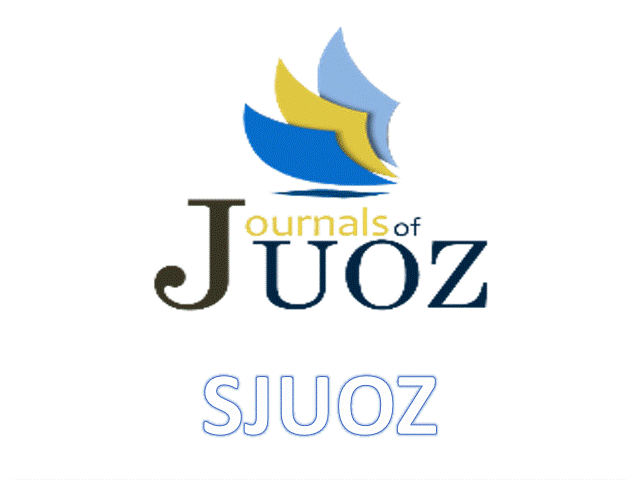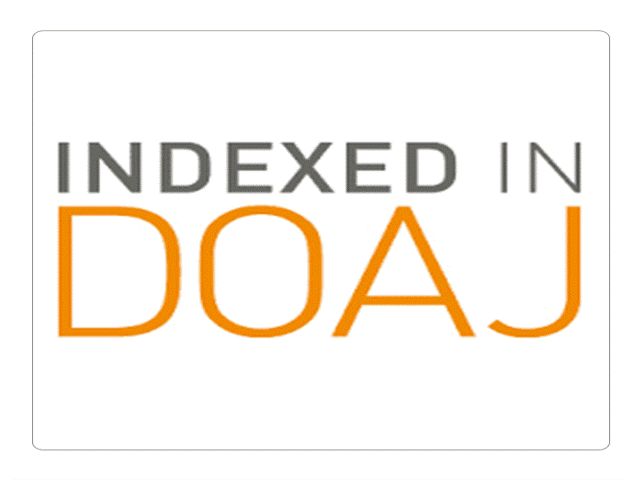Diversity of Soil Microfungi in Pine Forest at Duhok Governorate, Kurdistan Region, Iraq
Keywords:
microfungi, diversity, forest soil, IraqAbstract
The soil microfungi inhabiting pine (Pinus brutia Tern.) forests in Atrush and Zawita, Duhok governorate(Kurdistan region),Iraq were examined by using five isolation methods with the objective to compare the diversity of soil microfungi at O1 and O2 soil horizon layers from both sites. A total of 26 genera and 51 species of soil fungi as well as yeasts and non- sporulating mycelia were isolated from the two sites. Aspergillus was represented by 17 species and thus showed the widest diversity among all recovered genera. A.niger and A.fumigatus were the most frequent species among the genus. Black aspergilli were the most common species among the genus. They were represented by five species viz A.awamori, A.foetidus, A niger, A. sclerotioniger and A.vadianes. Penicillium was the second in the number of species isolated and was represented by 6 species. These include P. cammeberti, P. citrinum, P. coryophilum, P. digitatum , p. glabrum and P. roquefotri.. Two species were identified in each of the genera Absidia, Cladosporium, Emericella, Mucor and Paecilomyces. The rest genera that included Alternaria, Cunnighamella, Chaetomium, Corynascus, Eupenicillium, Fusarium, Gymnoascus, Melanocarpus, Monilia, Pestatiolopsis, Phaeoacremonium , Phialophora, Rhizopus, Sordaria, Stachybotrys, Scytalidium, Thermomyces, Trichoderma and Ulocladium were each represented by one species. The highest similarity index for fungal community inhabiting soil at both sites was found in soil at O1 layer (Atrush) and O2 layer (zawita).The least (SI) was recorded between O1 layer (Zawita) and O2 layer (Atrush). Absidia spinosa, and Mucor plumbeus are newly recorded from Iraq; hence they represent new additions to the Iraqi mycobiota.
Downloads
References
Abdullah, S.K. and AL-Bader, S.M. (1989). A new thermotolerant species of Chaetomium from Iraqi forest soil. Int. J. Mycol. Lichenol. 4:83-91.
Abdullah, S.K. and AL-Bader, S.M. (1990). On the thermophilic and thermotolerant mycoflora of Iraqi soil. Sydowia 42: 1-7
Abdullah, S.K. and Mohammed, A.A.H. (2011). prevalence of black Aspergilli in soil at vineyards in Duhok, Kurdistan region of Iraq. Proc. 4th Int. Sci. conf. Salahaddin Univ. Erbil. 3: 966-969.
Abdullah, S.K. and Zora, S.E. (1993). Soil microfungi from date palm plantations in Iraq. Basrah. J. Sci. 11B: 45-58.
Abdullah, S.K., Aldossari, M.N and Al Imara, F, J. (2010). Mycobiota of surface sediments in Marshes of southern of Iraq. Marsh Bulletin 5: 14–26.
Abdullah, S.K., AL-Khesraji, T.O. and EL-Edamy, T.Y. (1986). Soil mycoflora of the southern desert of Iraq. Sydowia 39: 8-16
Abdullah, S.K., AL-Saadoon, A.H. and AL-Salihy, H.M. (2007). Fungi from the tidal zone of khawr AL-Zubiar canal southern Iraq. Marsh Bulletin 2: 18-13.
Abdullah, S.K., Montfort, E., Asensio, L., Salinas, J., Lopes-Lorca, L.V. and Janson, H.B. (2010). Soil mycobiota of date palm plantation in Elche, SE Spain. Czech Mycol. 61: 149-162.
Abdullah, W.R. and Abdullah, S.K. (2008). Taxonomic study on black aspergilli from soil in Kurdistan region of Iraq. J. Duhok Univ. 12: 288-295.
Abdullah, W.R. and Abdullah, S.K. (2009). Taxonomic study on Aspergilli and their teleomorphs from soil in northern Iraq. Proc. Ist. Sci. conf. Biol. Sci. section Botany, Mosul University P. 328-363.
Abdullah, W.R. and Abdullah, S.K. (2010). Taxonomic study on penicilli from soil in Kurdistan region of Iraq. J. Duhok Univ. 13: 144-163.
AL- Bader, S.M., Abdullah, S.K. and Ayed, A.Y. (2000). A study of soil microfungal community in Mosul forest, North Iraq. Basrah J. Researches 24: 69-87 (In Arabic).
AL-Doory, Y., Tolba, M.K. and AL-Ani, H. (1959). On the fungal flora of Iraqi soils II. Central Iraq. Mycologia 51: 429-439.
Buringh, B. (1960) .soils and soil conditions in Iraq. Bagdad, Iraq.
Chiacek, L.J., Anderson, W.L. and Barak, P.W. (1996). Linkages between soil quality and plant, animal and human health. In SAS special publication 49.
Christensen, M. (1969). Soil microfungi of dry to mesic conifer hardwood forests in northern Wisconsin. Ecology 50: 9–27.
Domsch, K.H., Gams, W. and Anderson, T.H. (1980). Compendium of soil fungi. Academic press, New York
Durrel, L.W. and Shields, L.M. (1960) .Fungi isolated in culture from soil of the Nevada test site. Mycologia 52: 636-641.
EL-Dohlob, S.M. and AL-Helfi, M.A. (1982). Soil fungi of the South Iraq. Bas. Nat. Hist. Mus. Bull, 5:3-37.
Ellis, M.B. (1971). Dematiaceous hyphomycetes Commonwealth Mycological Institute, Kew, Surrey, U.K.
Ellis, M.B. (1976). More dematiaceous hyphomycetes Commonwealth Mycological Institute, Kew, Surrey, U.K.
Frisvad, J.C. and Samson, R.A. (2004) polyphasic taxonomy of Penicillium subgenus Penicillium. A guide for identification of food on air-borne treverticillate penicillia and their mycotoxins .Studies in mycology 49: 1-173.
Furuya, K. and Naito, A. (1979). An effective method for isolation of Boothelia tetraspora from soil. Trans. Mycol. Soc. Japan 20: 309-311.
Furuya, K. and Naito, A. (1980). Stimulation of ascospore germination by phenolic compounds in members of Sordariaceae. Trans. Mycol. Soc. Japan 21: 77-85.
Guarro, J., Abdullah, S.K., Al-Bader, S.M., Figueras, M.J. and Gene, J.C. (1996). The genus Melanocarpus. Mycol. Res. 100: 15–78
Halwagy, R, Moustafa, A.F. and Kamel, S.M. (1982) .Ecology of the soil mycoflora in the desert of Kuwait. J. Arid. Environ. 5:109–125.
Ismail, A.L.S. and Abdullah, S.K. (1977). Studies on the soil fungi of Iraq. Proc. Indian Acad. Sci. 86B, 151-154.
Klich, M.A. (2002). Idemtification of common Aspergillus species. CBS, Ultrecht, the Netherlands.
Manoch, L. (2004). Soil fungi in E.B.G. Jones, M. Tantichareon and K.D. Hyde (eds.) Thai Fungal Diversity. Biotech. Thialand pp 341-154
Moubasher, A.H. and Mustafa, A.F. (1970). A survey of Egyptian soil fungi with special reference to Aspergillus, penicillium and Penicilium- related genera. Trans. Bcit. Mycol. Soc. 54: 35–44.
Parkinson, D., Gray, T.R.G. and Williums, S.T. (1971). Isolation of microorganisms. In methods for studying the ecology of soil microorganisms. IBP Handbook No. 19 Blackwell Scientific Publication, London pp. 36-56.
Pitt, J.I. and Hocking, A.D. (1997). Fungi and Food spoilage. 2nd edition Blackie Academic of professional, London.
Ranzoni, F.V. (1986). Fungi isolated in culture from soils of the Sonoron desert. Mycologia 60; 365-371.
Samson, R.A., Noonim, P., Meijer, M., Houbraken, J., Frisvad, J. and Varga, J. (2007). Diagnostic tools to identify black aspergilli. Studies in Mycology 59: 129-145.
Shahbaz, S.E. (2007) Pinales with a field guide to the trees and shrubs of Kurdistan region of Iraq. Spriez-press and publisher, Duhok, Iraq.
Shahbaz, S.E., Pasha, A.A and Balo, A.H. (2002). The Altitudinal variation of Pinus bruitia Ten (Pinaceae) in Atrush Natural forest. J. Duhok Univ. 5: 23-32
Sorenson, T. (1948). A method of establishing group of equal amplitude in plant sociology based on similarity of species content and its application to analysis of the vegetation on Danish commens. Biologiske Skitter Det Konglige Danske Videskabernes Selskab 5: 1-34.
Townsend, C.C. and Guest, E. (1966). Flora of Iraq. Vol. I. Ministry of Agriculture and Agrarian Reform Bagdad, Iraq.
Warcup, J.H. (1960) . Methods for isololation and estimation of activity of fungi in soil. In D.Parkinson and J.S. Waid (eds.). the Ecology of soil fungi, Liverpool University press PP 3-21.
Warcup, J.H. and Baker, K.F. (1960). Occurrence of dormant ascospores in soil. Nature (London) 197: 1317-1318.
Watanabe, T. (2002). Pictorial Atlas of soil and seed fungi. Morphologies of cultured Fungi and Key to species. 2nd edition, CRC press. London.
Downloads
Published
How to Cite
Issue
Section
License
Copyright (c) 2014 Samir Kh. Samir, Lava H. Nashat

This work is licensed under a Creative Commons Attribution 4.0 International License.
Authors who publish with this journal agree to the following terms:
- Authors retain copyright and grant the journal right of first publication with the work simultaneously licensed under a Creative Commons Attribution License [CC BY-NC-SA 4.0] that allows others to share the work with an acknowledgment of the work's authorship and initial publication in this journal.
- Authors are able to enter into separate, additional contractual arrangements for the non-exclusive distribution of the journal's published version of the work, with an acknowledgment of its initial publication in this journal.
- Authors are permitted and encouraged to post their work online.








